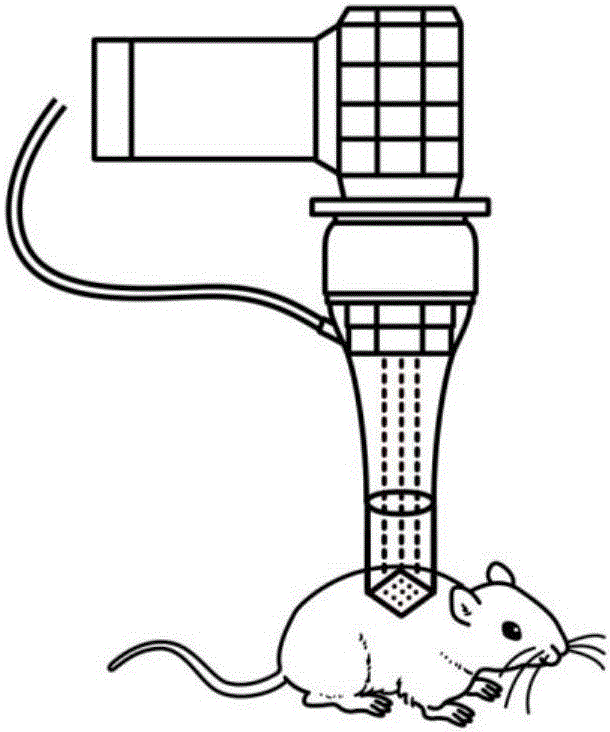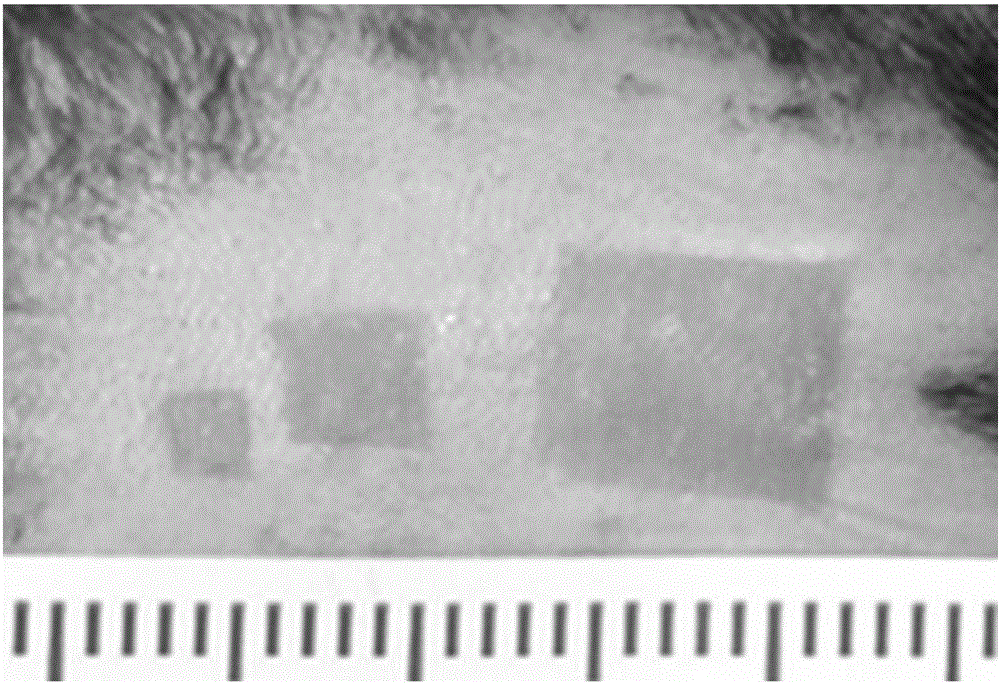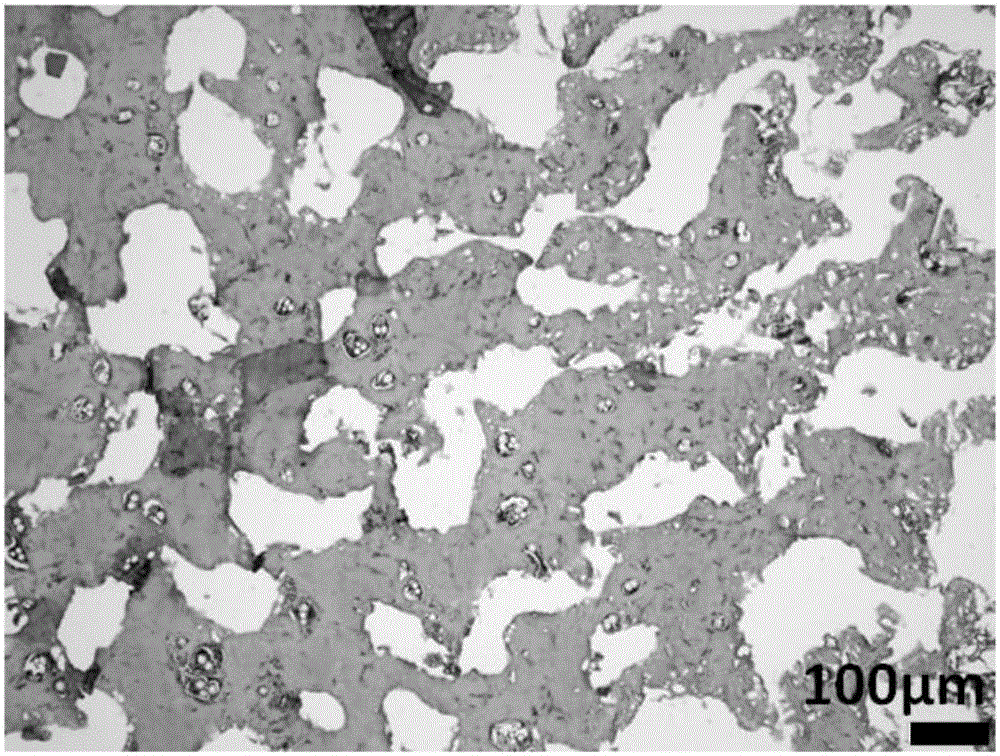Preparation method of mouse skin burn model
A mouse and model technology, applied in the fields of medical science, veterinary instruments, veterinary surgery, etc., can solve the problem of precise control and repeated repetition of unfavorable burn depth, burn wound area cannot be accurately controlled, and burn area and depth are difficult. To achieve the effects of reducing mortality and anesthesia effects, avoiding pathophysiological changes, and accurately controlling the area and location of burns
- Summary
- Abstract
- Description
- Claims
- Application Information
AI Technical Summary
Problems solved by technology
Method used
Image
Examples
Embodiment 1
[0040] Example 1. Preparations before making models such as mouse anesthesia and depilation
[0041] 1. Mice anesthetized
[0042] The operator pinches the skin of the neck and back of the mouse with his left hand to fix the mouse and expose the abdomen, wipes the alcohol cotton ball twice at the place where the needle is to be inserted in the abdomen of the mouse, and injects 0.15ml of 1% pentobar into the abdomen of the mouse with a 1ml syringe in his right hand Sodium perbital, after the injection, put the mouse into the cage until the anesthesia takes effect.
[0043] 2. Mouse depilation
[0044] After the mice were anesthetized, a 3×3cm area on the back was designed to be depilated, and the depilatory cream was applied to the set area, and the back hair was removed after 3 minutes.
Embodiment 2
[0045] Example 2. Carbon dioxide fractional laser to make a mouse burn model
[0046]Using a carbon dioxide fractional laser system (UltraPulse Encore, Lumenis, Yokneam, Israel), adjust to DEEP FX mode, 300Hz, density 25%, pulse number 1 time, adjust the laser energy to 2.5, 5, 10, 20, 30, 40mJ, the laser irradiation distance is determined by the laser head, the red semiconductor laser is used as the guiding beam for pulses, and six 0.5×0.5 wounds are respectively made on the back of the mouse ( figure 1 and figure 2 ).
Embodiment 3
[0047] The mouse burn model of embodiment 3. making is generally photographed and H&E staining
[0048] Place the modeled mice flat on the table, and take pictures after exposing the wound. Then the damaged skin and surrounding normal skin were cut out, and the hot water scald model was made according to previous literature reports, and the skin was cut out as a control (see literature: Ren Peng, Guan Dawei, Zhao Rui, Ma Wenxiang, Zhang Shutao, Establishment of mouse skin scald model, Journal of Forensic Science, 2012, Vol. 28, No. 2, pp. 92-94, 4 pages in total). H&E staining (see literature for methods: Zhang F, Wang X, Qiu X, Wang J, Fang H, Wang Z, Sun Y, Xia Z. The protective effect of Esculentoside A on experimental acute liver injury in mice. PLoS One.2014Nov 18; 9 (11):e113107.) The results show that fixed pulse distance, time and frequency, and changing pulse energy can respectively create I°, shallow II°, deep II°, III° and IV° wounds ( image 3 , 4 and Table 1). ...
PUM
 Login to View More
Login to View More Abstract
Description
Claims
Application Information
 Login to View More
Login to View More - R&D
- Intellectual Property
- Life Sciences
- Materials
- Tech Scout
- Unparalleled Data Quality
- Higher Quality Content
- 60% Fewer Hallucinations
Browse by: Latest US Patents, China's latest patents, Technical Efficacy Thesaurus, Application Domain, Technology Topic, Popular Technical Reports.
© 2025 PatSnap. All rights reserved.Legal|Privacy policy|Modern Slavery Act Transparency Statement|Sitemap|About US| Contact US: help@patsnap.com



